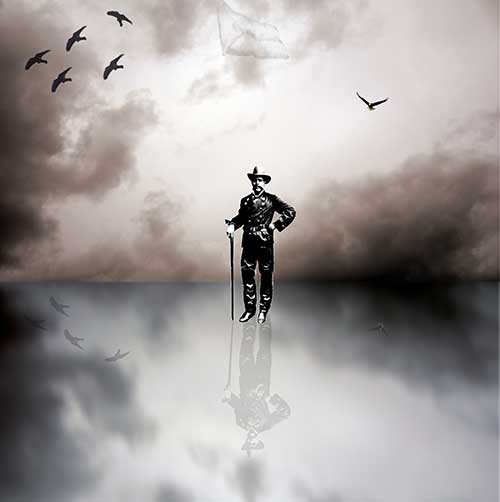

Antonio Maceo
One of the most-loved figures in Cuban history is Antonio Maceo, who came to be remembered as The Bronze Titan after his death in battle for Cuban independence from Spain on December 7 1896.
Maceo was born on June 14 1845 in Santiago de Cuba, the son of a free black Venezuelan farmer and dealer in agricultural products. At age sixteen Maceo went to work for his father, delivering produce and supplies by mule back.
Young Maceo developed an active interest in the political issues of the time, and was encouraged by his parents to act on his feelings.
Weeks after Carlos Manuel de Céspedes' revolt against Spain on October 25 1868 (known as "El Grito de Yara") Maceo and his brothers joined the war for independence. Within five months, Maceo was promoted to commander, and within a matter of weeks after that he was again promoted to lieutenant colonel of the Liberating Army (1/16/1869). In what became the Ten Year War, Maceo participated in over 500 battles against the Spanish Empire.
Historian Philip Foner, from his book ANTONIO MACEO: "Maceo delighted in outsmarting the Spanish generals; again and again, he decoyed them into situations that were disastrous to them."
Fearing his sudden rise in fame and popularity, rebel conservatives launched an all-out slander campaign against Maceo. This is believed to be one of the main reasons for the failure of the war.
In 1878 Maceo opposed the Pact of Zanjón, which ended the war in a stalemate and the Spanish promise of reform. The Pact offered a general amnesty to the rebels, but did not end slavery, although it did grant freedom to slaves who fought on either side.
When the war ended Maceo was forced into exile, surviving numerous assassination attempts planned and funded by the Spaniards up until the beginning of the 2nd War for Cuban Independence.
After years of organizing Cubans inside and outside the island, José Martí founded the Cuban Revolutionary Party in 1892, and sought Maceo's help in what would be Cuba's final war against Spain. During this war, Maceo led the Liberating Army into Havana in what's known as The Western Invasion. It is considered one of the great military feats of the century.
Like his father and 3 brothers, Maceo died in battle, fighting for Cuban independence. His final moment came in the battle of Punta Brava, in Western Cuba, on December of 1896.
In his military career, Maceo received 24 battle wounds and was known in the Spanish press as "the lion."
Related:
Antonio Maceo Timeline | Maceo's
Letter to President Estrada Palma,
from his camp in Baraguá, on May 16 1876 |
Protest of Baraguá, issued
on March 23 1878 | Martí on Maceo | José Martí | Cuba's War for Independence